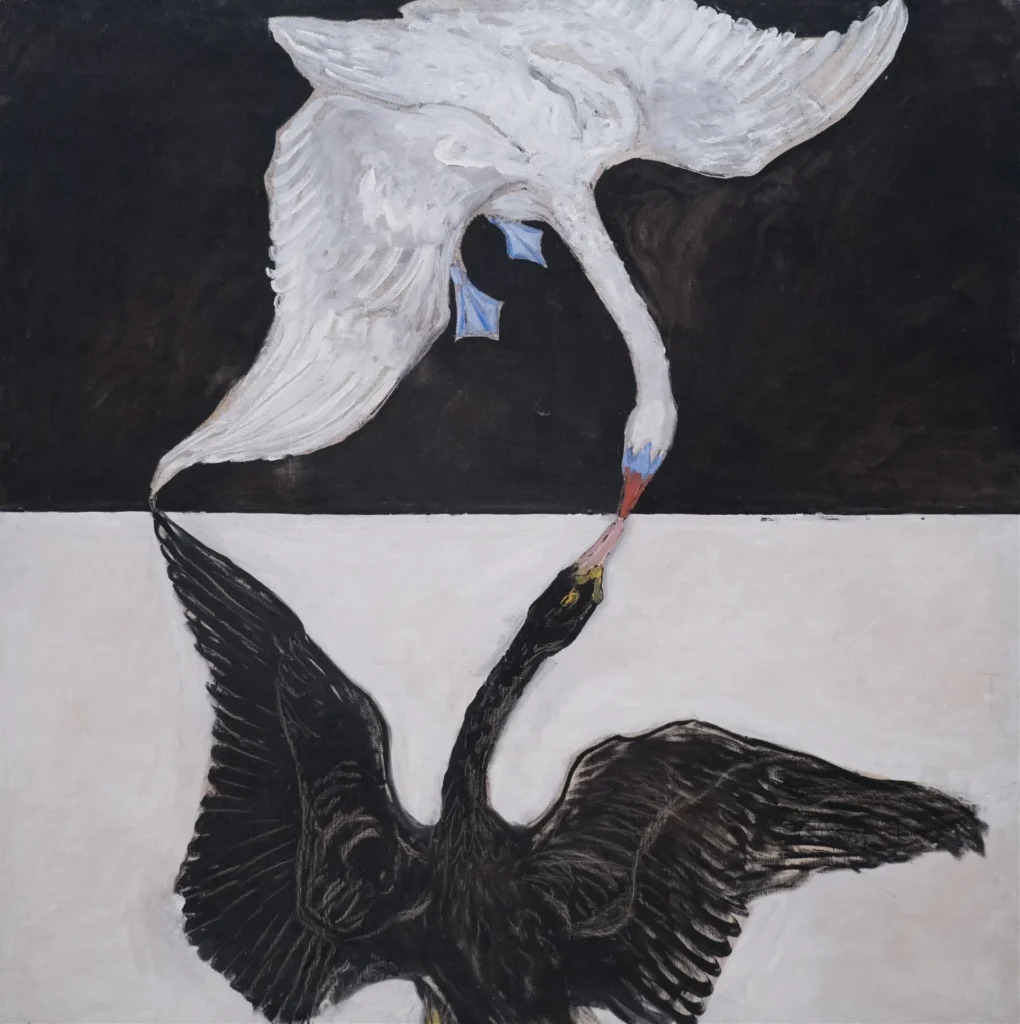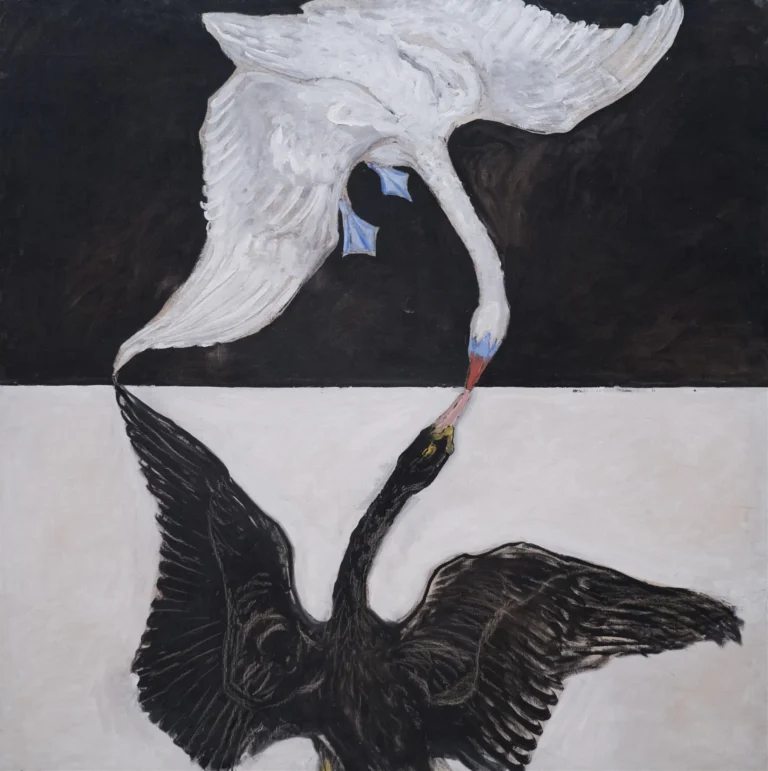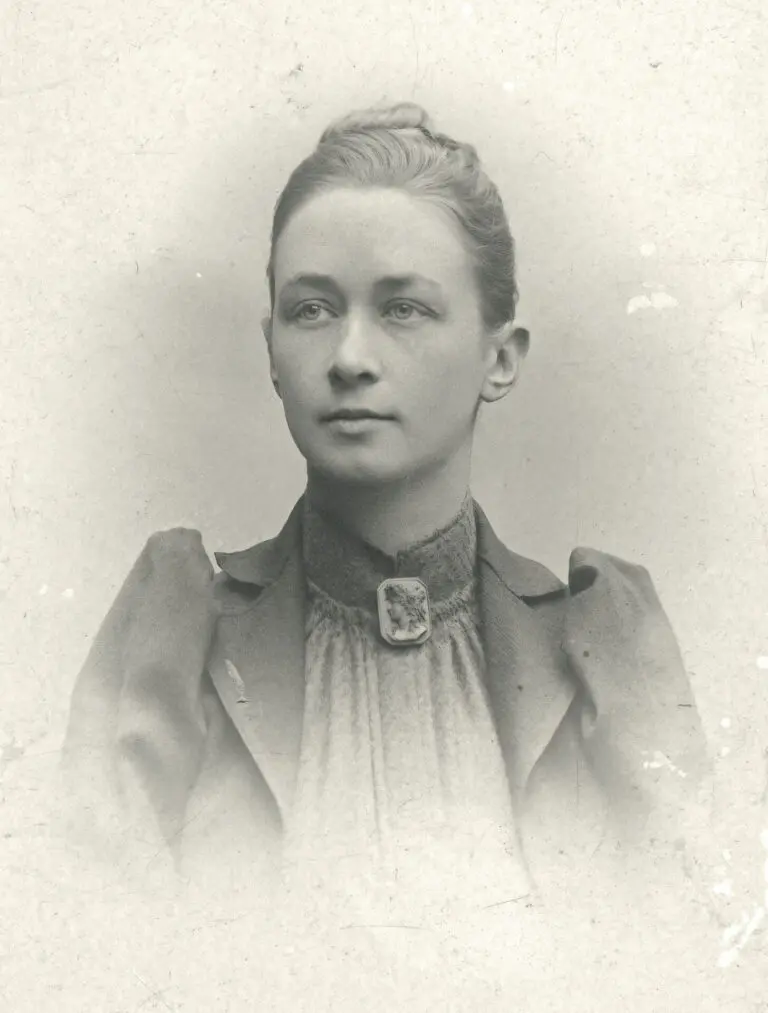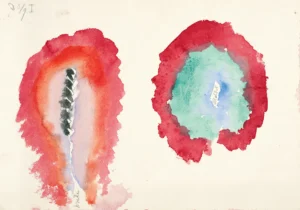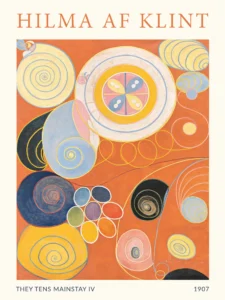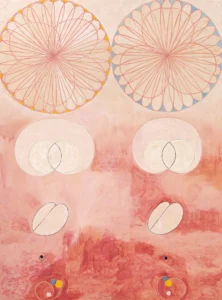Group IX-SUW, The Swan, No. 1 (1915)
Hilma af Klint's 'Group IX/SUW, The Swan, No. 1' is a remarkable oil painting that features the striking image of two swans, one black and the other white, meeting beak-to-beak, symbolizing the union of opposites such as light and dark, masculine and feminine. Created in 1915, this artwork is part of a series that delves into the concept of transcendence while merging both realistic and abstract representations. As one of the early pioneers of abstract art, af Klint's work has garnered increasing recognition for its unique spiritual depth.
1915
About the Artwork
The story behind 'Group IX/SUW, The Swan, No. 1' intertwines art, mysticism, and the quest for spiritual understanding. Hilma af Klint, a member of 'The Five,' a group of women engaged in Theosophy and spiritual exploration, created this painting amid her profound pursuits of the spiritual realm. The swan, a symbol of transformation, resonates with the artist's quest for unity within opposites, emphasizing balance and harmony. Throughout her career, af Klint explored automatic drawing, allowing her subconscious to communicate with the spirit world, thereby infusing her works with rich symbolism and deep meaning. Her artwork, however, remained largely in the shadows until its rediscovery decades later, positioning her as a significant figure in the evolution of modern abstract painting.
Did You Know
Hilma af Klint is celebrated as one of the first abstract artists, creating works that predate the modern abstract movement by several years, paving the way for artists like Kandinsky and Mondrian.
Despite her impactful contribution to art, af Klint chose not to publicly exhibit her abstract works during her lifetime. It wasn’t until 1986 that her art gained significant exposure, revealing her profound influence on modern art.
Af Klint’s artistic process was heavily influenced by her spiritual beliefs, often involving communication with spiritual entities she referred to as the ‘High Masters,’ guiding her in creating her deeply symbolic pieces.




